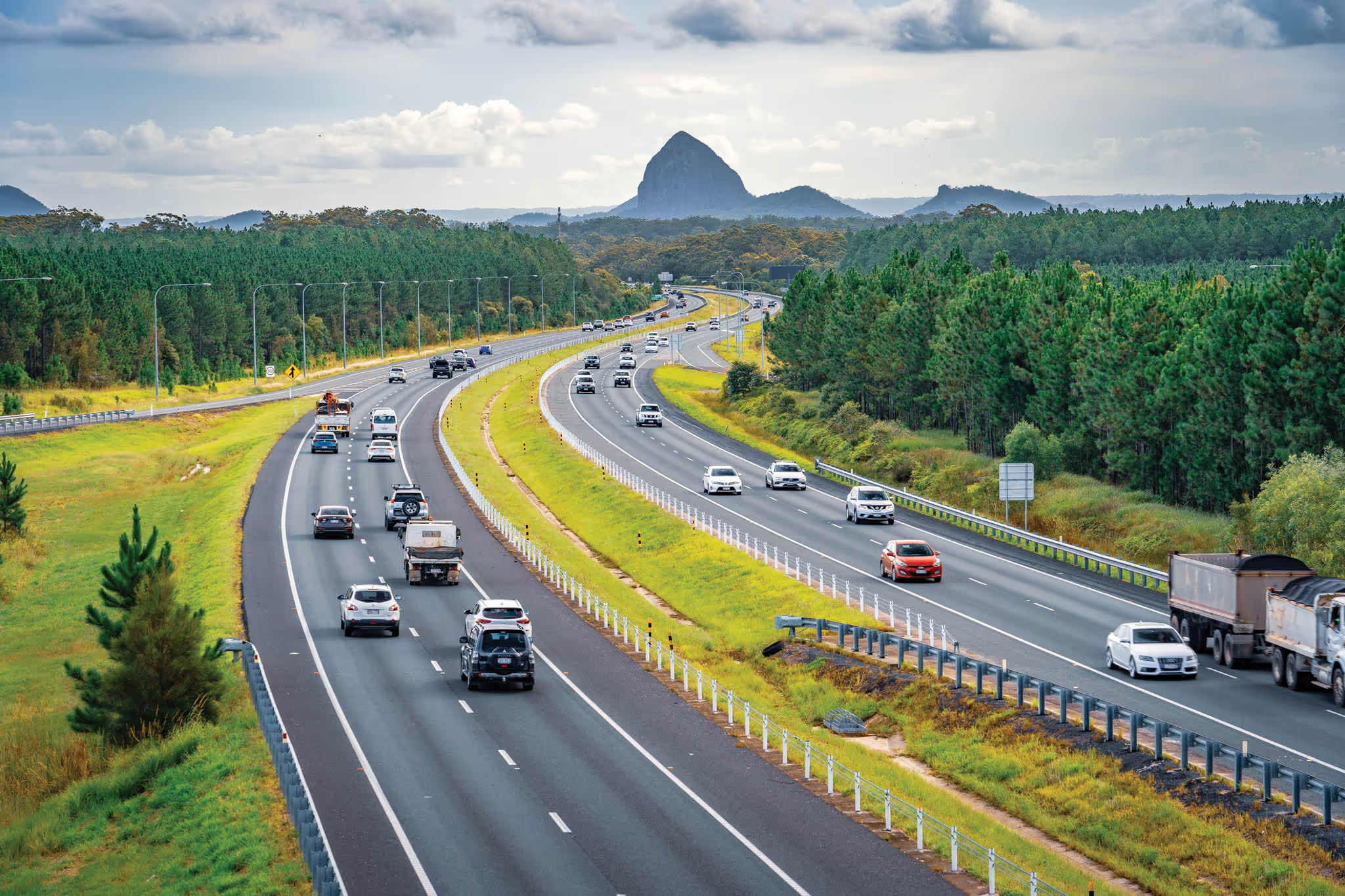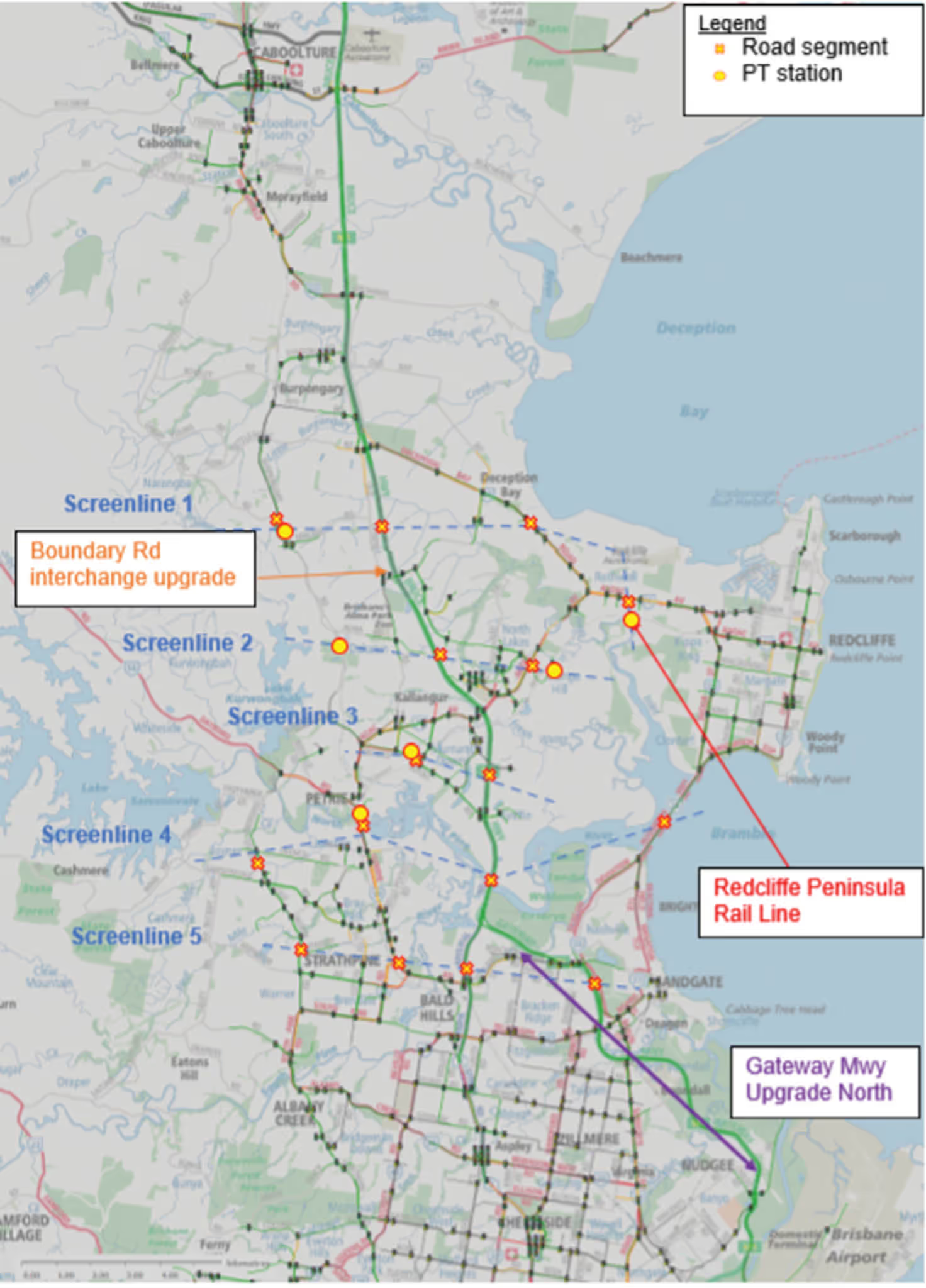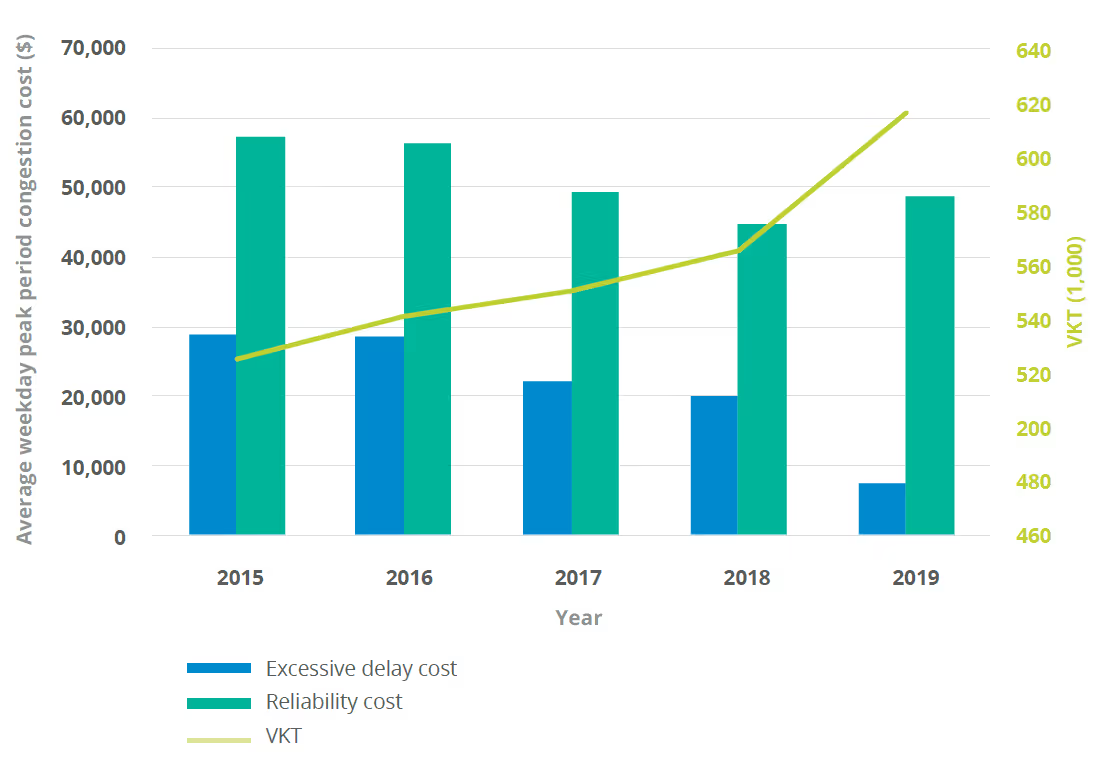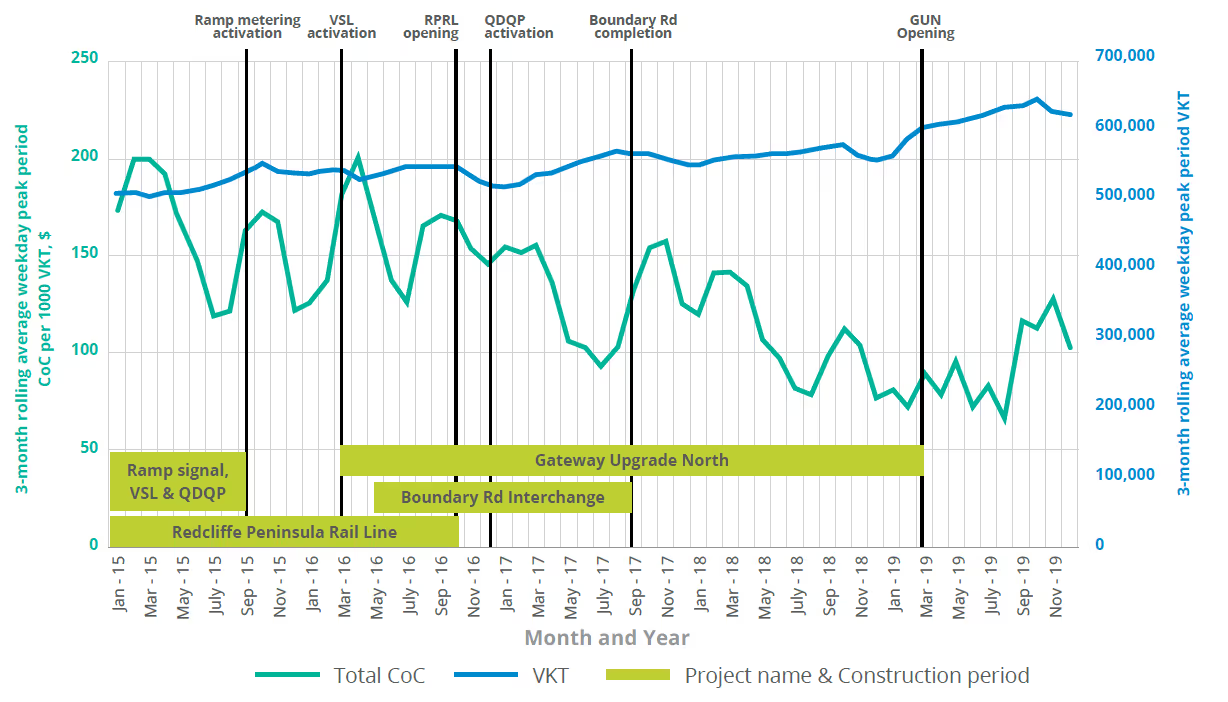

The Queensland Department of Transport and Main Roads (TMR) engaged ARRB via the National Asset Centre of Excellence (NACoE) program to undertake project R104 to evaluate the impacts of smart motorway treatments on the Bruce Highway and three other infrastructure projects in the vicinity of the study area. The objectives of the evaluation were to:
The study results can also assist in determining the effectiveness of past investments, inform future investments and benchmark performance.
A 24 km section of the Bruce Highway (which connects Brisbane with the north), between Bribie Island Road and South Pine River Bridge, was selected as the study site. Four major infrastructure projects relevant to the Bruce Highway, which included smart motorway treatments and response strategies, were identified for benefit evaluations as follows:
Figure 1 shows the location of the Bruce Highway study area and the major infrastructure projects.

This assessment was conducted in two parts:
In this paper, the total congestion cost is defined as the sum of excessive delay cost and travel time reliability cost. Other congestion cost components, such as environmental costs and vehicle operating costs, are not relevant to the travel time reliability measurement. They have been researched and implemented in TMR cost-of-congestion practices but were out-of-scope for this project.
For Part 1, Bruce Highway speed and flow data from January 2015 to December 2019 along the selected study site were extracted from the STREAMS National Performance Indicator (NPI) system. This covered a total of 18 road links for the analysis of congestion cost. Data cleansing and gap filling were then conducted to ensure high quality data. Vehicle composition data between 2015 and 2019 from traffic classification counters were also used as to cover the multi-modal CoC evaluation.
For Part 2, TransLink provided monthly average public transport ridership data for the bus routes and rail lines in the study area. A reference data set was also acquired for the same time period, containing the total public transport ridership for the remainder of South East Queensland (SEQ). In addition, daily traffic volume (flow) data in 15-minute intervals for all selected arterial road and motorway links were extracted from STREAMS. Annual population statistics for the suburbs in the study area were sourced from the Australian Bureau of Statistics. The study period of Part 2 was defined as June 2016 to December 2019, which was shorter than for Part 1, because sufficiently reliable data were available for this period only.
Part 1 of the study focused on an analysis of average weekday peak period congestion cost between 5am and 10am, when the managed motorway was operating. The congestion cost reductions identified on the Bruce Highway southbound between 2015 and 2019 are as follows:


Part 2 considered the changes in two modes of travel – private road usage (passenger vehicle occupants) and public transport (rail and bus passengers). The focus was on overall trends between 2016 and 2019 and on the impact of two of the major infrastructure projects, namely the completion of the GUN in early 2019 and the opening of the RPRL in October 2016. Five screenlines (SLs), as shown in Figure 1, were defined to capture traveller numbers at different parts of the road and rail network. Similar to Part 1, average weekday peak period traveller numbers were analysed. The key findings were:
In general, findings from Part 1 and Part 2 are consistent, in particular those about the impact of the GUN project, which was investigated in both Part 1 and Part 2. The benefits and impacts of the four major infrastructure projects are summarised as follows:
It was observed from the data that the ramp metering, VSL and QDQP systems were best utilised and performed best when all systems were activated. For example, the before-and-after comparison (2015 versus 2017), where all ramp metering, VSL and QDQP systems were activated, revealed significant congestion reduction on the Bruce Highway. While there was still ongoing traffic disruption from the GUN project, after-period data revealed a 21% reduction in normalised excessive delay cost and a 23% reduction in both normalised reliability cost and total cost. QDQP added significant benefits to the Bruce Highway congestion reduction.
The implementation of ramp metering and the VSL and QDQP systems also increased the Bruce Highway’s operational capacity before the flow breakdown and maintained higher operational capacity after the flow breakdown.
Significant reduction in motorway congestion cost was observed from a before-and-after comparison (2016 versus 2018) for the links directly impacted by the upgrade. While the average weekday peak period VKT increased by 3%, the normalised excessive delay cost, reliability cost and total cost were reduced by 55%, 45% and 47% respectively. However, due to over-lapping of project time frames, a portion of the reduction in congestion cost should be attributed to the benefits of ramp metering and the VSL and QDQP systems.
Completion of the GUN project led to an operational capacity improvement, attracted a large increase in demand for the Bruce Highway southbound, and at the same time eased peak period congestion significantly. The comparison of the selected periods between 2018 and 2019 showed that while 2019 had an increase of 12% in average daily peak period VKT for the links directly impacted by the GUN, the normalised excessive delay cost and total costs reduced by 67% and 17% respectively. However, the completion of the GUN also led to a stagnation of public transport usage in the study area, despite consistent population growth.
Following the opening of the RPRL in October 2016, an instant shift towards a higher public transport (rail) mode share was observed. Comparing June to August 2016 (before-period) to June to August 2017 (after-period), the mode share at SL 3 increased from 0.1% to 5.7% (+5.6%). This trend of above-average values for the RPRL continued into 2018. The mode share shifts at the other SLs were lower (+1.4% to +3.9%), but also increased, indicating an uptake of public transport usage. It is concluded that the above average figures for the RPRL were due to the particularly high population growth near the new RPRL (SL 3), as well as the availability of the new rail line with its increased capacity, and the truncation/rerouting of bus services.
As part of the project, ARRB also developed a beta version of a Bruce Highway CoC analysis Excel spreadsheet tool that enables fast processing of the before-and-after analyses. This tool can readily measure the excessive delay cost, reliability cost, average volumes, average speeds, vehicle delay and other key performance indicators on a link level or route level of the Bruce Highway study route.